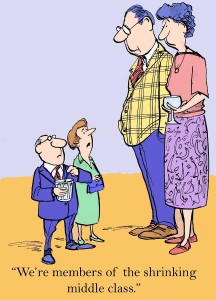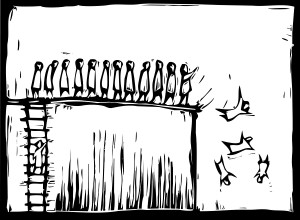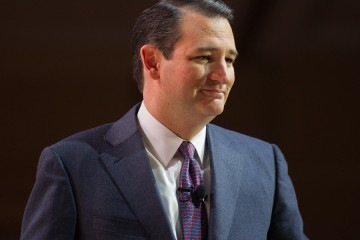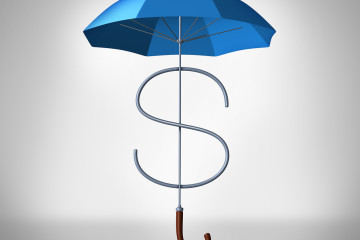American Public Warming to Redistribution: Christopher Flavelle
©2015 Bloomberg View
NOCYQB6JTSE8
(Bloomberg View) — The erosion of the U.S. middle class is changing how Americans see themselves. It might also be changing the way they view government redistribution of wealth.
The stagnation of earnings for most American households has been well established. From 1979 to 2007, real after-tax income grew 37 percent for the middle three-fifths of households. (For the top 1 percent, it nearly tripled.) Real median household income in 2013 was 8.7 percent below its 1999 high. The average hourly wage last year was lower, in constant dollars, than when Richard Nixon was president.

QuickTakeSafety Net
How to address that stagnation is one of the great questions of modern U.S. politics, and there are plenty of ideas on how to fix it — from controlling health-care costs and fixing the tax code to learning how to live in a labor market increasingly full of robots. But stagnating wages raise yet another interesting question: Is all this chipping away at Americans’ aversion to using government programs to redistribute wealth? The data says yes, but gently. The fading fortunes of most households have coincided with an identity shift: According to the Pew Research Center, the share of adults who identify themselves as lower class is now almost as great as those who see themselves as middle class. As the share of Americans who identify as middle class has fallen below 50 percent, the perceived link between effort and outcomes has weakened, too. Just before the tech bubble burst in 2001, three-quarters of Americans surveyed said hard work and determination were enough for most people to get ahead. By last year, that number had fallen to 60 percent.
Popular views about what causes poverty have shifted even more radically, according to surveys compiled by the Pew Research Center. In the 1960s, about 1 in 4 people said poverty was due primarily to circumstances beyond a person’s control. That number now hovers around 1 in 2.
Where does all this leave the question of government redistribution? In 1939, just 35 percent of people favored redistributing wealth by heavily taxing the rich. By the end of the 1990s, that figure had risen to 45 percent; it now stands at 52 percent, according to Gallup. (That increase in support may also reflect pushback to the decrease in top marginal tax rates.) That shift appears to have knocked both political parties off balance. For Hillary Clinton, a slow roll out of her economic and safety-net policies is probably good politics — with no viable opponents for the Democratic presidential nomination, there’s no reason to take an early stance on, say, boosting Social Security benefits. But it may also reflect an uncertainty about how much appetite Democrats and independents have for further increasing social spending, especially as the popularity of the Affordable Care Act remains mixed.

For Republicans, the tension caused by a declining middle class has been more pronounced. You can see that in the push by so-called “reformicons” to emphasize middle-income tax credits over big drops in the top rate for personal income taxes, as well as the battle over whether Social Security payments should be cut (as Chris Christie proposes) or left alone (as Mike Huckabee insists). Advocating for smaller government is hard when the average American voter appears to be moving the other way. Of course, none of this means that the U.S. is about to become Denmark. But the self-reliance and independence that so defines Americans’ perception of themselves is starting to evolve, slowly but consistently, into something more complicated. The middle class may be stagnant. Its views about government are anything but.
To contact the author on this story: Christopher Flavelle at cflavelle@bloomberg.net To contact the editor on this story: Brooke Sample at bsample1@bloomberg.net
For more columns from Bloomberg View, visit http://www.bloomberg.com/view







No Comment